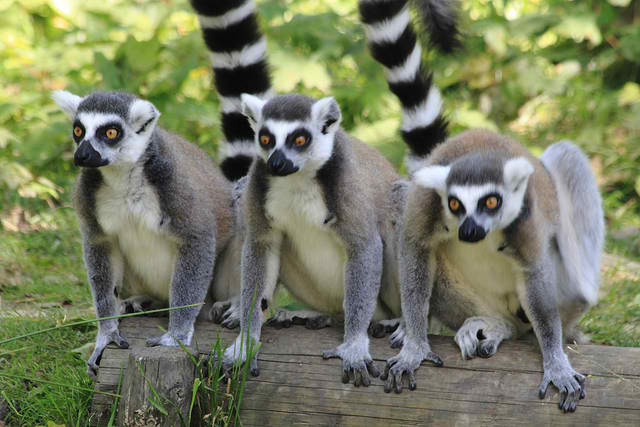
Of the 103 species of lemurs, over 90% should be on the Red List of Threatened Species. This is according to an assessment made by the Primate Specialist Group of the IUCN, BBC News Science and Environment reports.
Lemurs in the wild are only found in Madagascar, dubbed the ‘land of the lemurs’ as well as ‘the eight continent’ by some scientists for its rich biodiversity and many unique species found nowhere else in the world.
Species of lemurs are discovered in “staggering” numbers on the island, as stated in WWF’s 2011 report Treasure Island: New Biodiversity on Madagascar. 28 new species of lemurs have been discovered in the last 11 years alone, some of them including the world’s tiniest primates like the Berthe’s Mouse Lemur (Microcebus berthae), with an average body length of 92 millimeters. Dr. Christopher Golden of the US Harvard Center for the Environment came to the island in 1990 when there were only 34 known primate species. This has grown to more than 100 identified species of primates in 2011, he says in a BBC report last year. In the same article, he and other scientists discuss how lemur hunting for bushmeat has increased in past years, pushing many species of lemurs to critically endangered levels. This was a result of Madagascar’s traditional taboos being eroded by outside influences, lack of government enforcement, and an increasing demand for meat among locals. Madagascar has few sources of domestic meat and poultry raising was not viable as chickens tend to suffer from rainforest diseases. The result is an increasing pressure on lemur populations being hunted for food. Even protected species were being targeted.
Scientists are concerned about the increased levels of hunting because lemurs are slow-reproducing animals, some species taking seven to nine years to mature and bearing only one young once every two or three years. Dr. Golden stated that hunting lemurs in Madagascar is not sustainable in the long run.
Illegal logging in Madagascar also affects lemur populations drastically. Because 70% of Madagascar’s native people, the Malagasy, live on less than $1 a day (World Bank via BBC) the illegal trade holds great temptation for many. In 2009 an estimated 100,000 rosewood and ebony trees were taken from the national parks of Madagascar by illegal loggers. According to WWF, 200,000-300,000 hectares of forest are cleared each year partly due to illegal logging and mining. Less than 10% of Madagascar’s original forest cover is left, where many unique species now compete for habitat and resources. Not only do loggers cut down trees for the illegal trade, they also tend to hunt lemurs for food as they go deep into the forest to access rosewood and ebony trees.
23 species of lemurs qualify for the highest class of threat in the Red List, Critically Endangered, while 52 species are in the Endangered class. An additional 19 were determined to be in the Vulnerable to Extinction class, according to the Primate Specialist Group of the IUCN. IUCN recommends 8 types of activities in its action plan for the conservation priorities of Madagascar’s lemurs.
“Lemur” is derived from the Latin word lemures, meaning ‘ghosts’ or ‘spirits of the night’. This reflects the traditional cultural taboo among the Malagasy that hunting and eating lemurs are forbidden, as they are held in high regard. Sadly, with the double pressure of increased hunting and illegal logging, the lemurs seem destined to become only ghosts of Madagascar’s rich biodiversity’s past.
Photo Credit: Some rights reserved by corneliuscz on Flickr.


